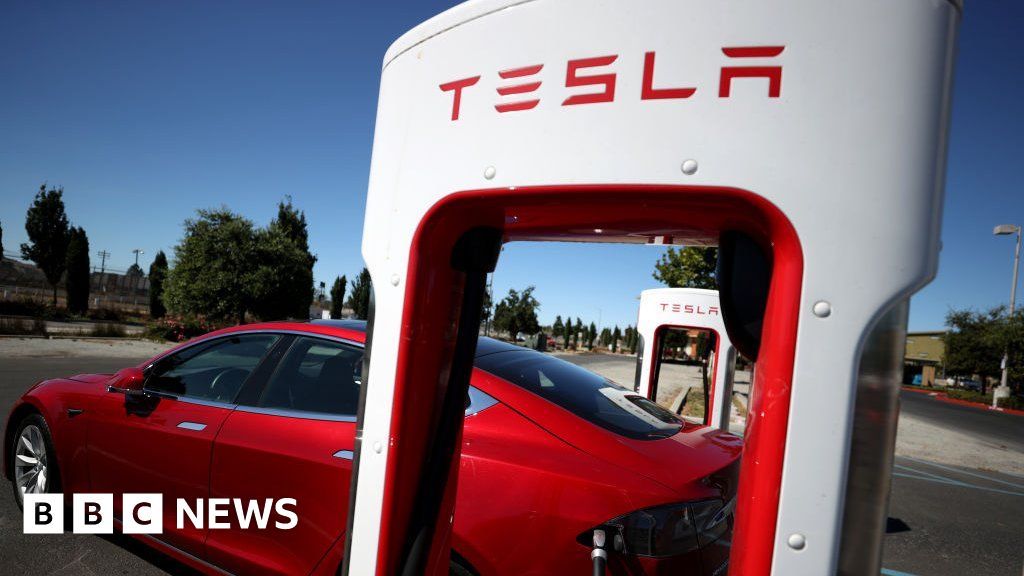- cross-posted to:
- hackernews@lemmy.smeargle.fans
- cross-posted to:
- hackernews@lemmy.smeargle.fans
spoiler
Tesla has fired its entire Supercharger division, staff who worked in the team say.
There are over 50,000 Superchargers globally, the company says, making it the world’s largest fast-charging network for electric vehicles.
Boss Elon Musk said the firm would cut one in ten jobs, as it faces strong competition from less expensive rivals.
It needed to be “absolutely hard core” about cost reduction, he wrote in a memo first reported by The Information.
The BBC has approached Tesla for comment,
Multiple employees have confirmed their departures from the division, which had hundreds of employees.
William Jameson, strategic charging programs lead at Tesla, posted on X that Mr Musk had “let our entire charging org go”.
“What a wild ride it has been”, he wrote.
Also writing on X, Mr Musk said the company still planned to grow the Supercharger network, “just at a slower pace for new locations”.
Andres Pinter, chief executive of Bullet EV Charging Solutions, a supplier to the charging network said that his team “woke up to a sharp kick in the pants this morning,” Reuters reported.
He speculated that Mr Musk could “reconstitute the EV charger team in bigger, badder, more Muskian way” in order to continue to benefit from US government funding to develop the network. ‘Extremely perplexed’
Tesla’s network of chargers is widely seen as industry leading, and recently it cut deals with several rival car-makers in north America to adopt its “NACS” charging standard so that their vehicles could use the network.
Fred Lambert, editor-in-chief of electric vehicle news website Electrek, posted on social media he was “extremely perplexed” by the move.
“If one thing was a clear success at Tesla, it’s the Supercharger network. Even from a talent perspective. No other charging team in the world has been able to do what Tesla did,” he wrote.
The quality and reach of the Supercharger network has long been a huge advantage for Tesla, James Attwood, acting magazine editor of Autocar, told the BBC.
It was “a key selling point for potential buyers” he added.
“But with regulators in both Europe and the US pushing the firm to open the Supercharger network to owners of other electric vehicles, it will offer less of an advantage in the future.”
Last year, seven large car manufacturers including Mercedes, Honda, BMW and Hyundai-Kia set-up a joint venture to build a rival fast-charging network.
As well as the cuts to the Supercharger department, the firm’s entire public policy unit will also be cut the Financial Times reported.
The layoffs come days after the firm reported its first quarterly revenue decline since 2021.
It follows declining sales at the company, which is also having to deal with an investigation into the safety of its Autopilot assisted driving system, and a recall relating to its newest model, Cybertruck.



AC works fine at home because you’re going to leave it plugged in overnight. it’s unworkable when you want charging to complete quickly. the advertised 0.25-1hr charge times aren’t possible over AC. the amperage needed would produce an absurd amount of heat without absurd wire dimensions that you’d never actually be able to lift and plug in. fast charging uses DC at or near the battery voltage so the supplied amperage isn’t massive and you don’t run large losses to a rectifier. to put this in perspective, even with DC, wires are usually liquid cooled to keep wire dimensions down and they’re still larger than any wire you’ve ever seen/used for any other purpose.
consider: the F150EV can power your house for 3 full days as a generator. that’s how much energy you’re trying to get into these batteries and it’s supposed to happen really fucking fast.